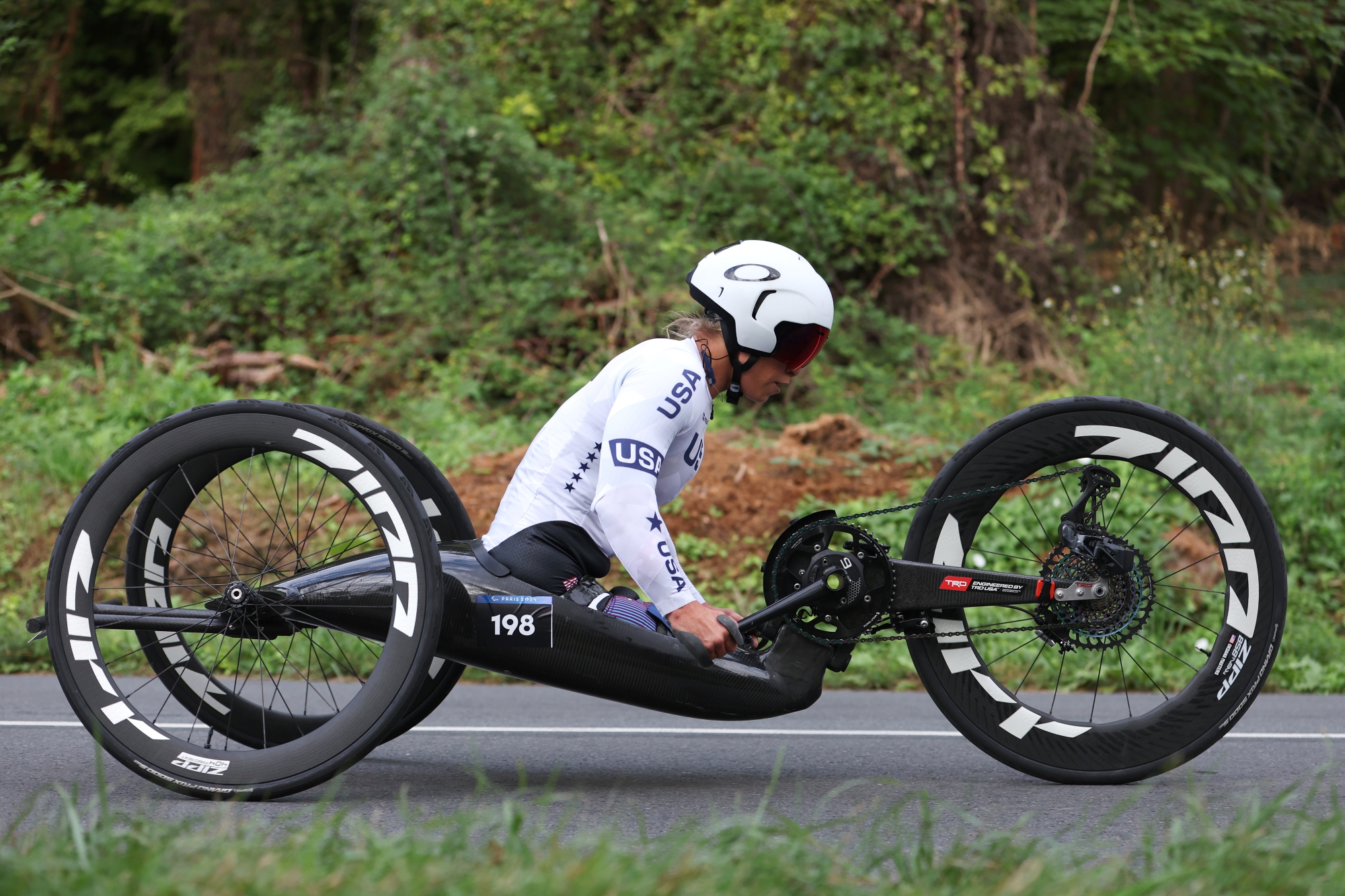
And there we have it. The end of a quite spectacular summer of sport in Paris.
Yesterday's closing ceremony marked the end of a brilliant celebration of sporting achievement over the last couple of months, but the Paralympics didn't only bring incredible athleticism but cutting-edge advancements in technology too.
Paralympic cycling demands specialized equipment tailored to individual needs, ranging from handcycles for athletes with lower-limb impairments to tandem bikes for visually impaired riders. These innovations, designed for performance and inclusivity, help athletes push the limits of speed, power, and endurance.
With the 2024 Games officially closed, we're taking a look at the impressive technology on display, innovations that offer a glimpse into the future of adaptive sports.
Oksana Masters' handcycle
It's been quite the Games for Oksana Masters, as she claimed her 2nd gold medal of the Paris 2024 Games last Thursday and 19th of her career. Masters successfully defended her titles in the H4-5 time trial and H5 road race, earning the Paralympic torchbearer a staggering 19 medals throughout her career.
She did so on a handcycle engineered by Toyota Racing Development.

Toyota is better known for its four-wheeled ventures, but the behemoth car company does venture outside the realms of automotive technology. Toyota's competition arm, Toyota Racing Development, worked with Oksana Masters to create this one-of-a-kind hand cycle, designed around her to maximise performance and comfort.
The cutting-edge handcycle features a carbon monocoque frame design that has been developed to be both comfortable as well as rapid. The main frame features numerous aero optimizations, with a smooth leading edge up front and aerofoil-shaped rear stays.

Masters uses 700c wheels front and rear on her handcycle, all three of which are from Zipp. At the rear, you'll find a pair of Zipp 404 Firecrest rims that have been laced up to custom hubs, designed to be received by the one-sided axle mounts. The wheels are shod with Continental GP5000 TR tyres, and set up tubeless.
Up front, things get a little bit more complicated. Handcycles are usually front-wheel drive, which means the groupset is generally mounted at the front of the bike. Masters' bike features an Eagle XX1 12-speed drivetrain, with a wide-range cassette. This is all paired to a 52t 1x chainring in the centre of the bike, giving Masters what looks to be a 500% gear ratio.

The front wheel is a Zipp 858 NSW 'rear wheel', which is also shod with Continental GP5000 TR tyres. Steering is handled by a pivot system just beneath the chainset that's controlled from the handlebars.
Jana Majunke's trike conversion
Fifth place finisher in the Women's T1-2 Individual Time Trial, Jana Majunke, uses a bespoke adapted Storck road bike in competition, complete with some interesting details that enable the bike to be converted into a tricycle.
The base bike itself is a Storck Aernario, which is a few years old. It's a rim brake model but crucially features a round seatpost, which makes it easy to firmly attach the rear mounting bracket for the bespoke rear frame.

The rear frame is mounted into the rear dropouts, and then spaced back around 100mm. This allows a cassette to be mounted in the centre of the new rear axle, meaning the groupset remains totally functional. Though this Aernario is a rim brake model, Majunke's rear wheels are disc brake. They are TRP cable-operated, providing a little more stopping power than rim alternatives, and are also far easier to mount.
Jetze Plat's interesting wheel setup
It's fair to say Jetze Plat is somewhat of a phenomenon. The Dutch para-cyclist competes in the H4 class, and finishes the games with three gold medals, across two different disciplines.
Plat stormed to victories in the H4 Road Race and H4 Time Trial, as well as winning the PTWC2 class Triathlon by over a minute.

An important player to all of those gold medals has been his Wolturnus hand cycle, which he used with a very interesting wheel setup. Rather than opt for deep sections like Masters, Plat rides a disc wheel at the front, and a pair of Twospoke M5 wheels at the rear.
Up front, you'll find a Roval 321 Disc shod with Continental GP5000 TR tyres - it's worth noting too that this is the fastest place for the disc wheel to be. With Aerodynamics being so important at the front of the bike, it makes sense to use a disc wheel up front - just ask Wout Van Aert.
Team GB's time trial tandem
It's been a mixed games for Stephen Bate and tandem pilot Chris Latham who went from the highs of a silver medal in the Men's B pursuit on track, to the pain missing the Men's B road race, after Latham fell ill before the event. The pairing also placed fifth in the Men's B time trial, and did so with an unsurprisingly optimised racing tandem.

The Ament racing tandem that the pair competed on was equipped with much of the latest time trial tech. Up front, Latham uses the WattShop Anemoi aero extensions. Bate's position is a little more interesting. Rather than use another set of aero extensions, the Brit simply uses a flat handlebar with elbow pads, and then rests his arms on the top tube of the tandem. This, we think, is to allow the riders to sit closer together on the tandem, which should improve aerodynamic efficiency.
The frame itself is also quite striking. To ensure the bike can handle the power output of two athletes, the bike features an oversized downtube, as well as cross bracing tubes through the middle of the bike.







